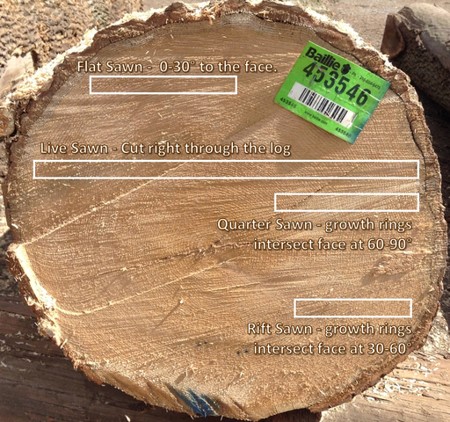 There is not just one way to saw hardwood lumber logs. Actually, we find that there are four common techniques used on a regular basis depending on the results a sawmill is trying to produce.
There is not just one way to saw hardwood lumber logs. Actually, we find that there are four common techniques used on a regular basis depending on the results a sawmill is trying to produce.
Flat sawn, (sometimes referred to as plain sawn), is the technique most used by sawmills because it is the most efficient. When lumber is flat sawn the annual growth rings are usually 30 degrees or less to the face of the board resulting in a grain pattern that is referred to as cathedral.
Live sawn cutting is when the sawyer cuts clear through the log without rotating it in the carriage. Boards cut this way can be very wide and include the full range of the log's character.
Rift sawn lumber is produced when boards are cut at angles between 30-60 degrees. This results in boards with straight grain patterns throughout the face of the board and without any flecking.
Quarter sawn lumber are also boards with straight grain patterns but it is intentionally cut with the growth rings intersecting the boards at angles of 60-90 degrees which results in a flecking on the face of the board as the molecular rays become more visible. In certain applications this is very desirable.
There are many resources available that provide a more in depth explanation of these techniques. If you are looking for simple, straight forward video to help you understand the different sawing techniques check out this one from the Woodworkers Guild of America. I think it explains it very well.
Tony C.
The Baillie Group

